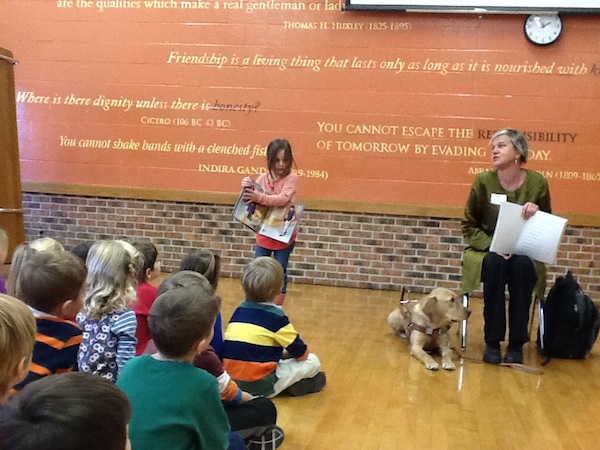Woman of the Year
January 26, 2013 • 11 Comments • Posted in baseball, blindness, careers/jobs for people who are blind, UncategorizedWe moved from Urbana to Geneva, Illinois in 1994, and during our three years there I worked for the Kane County Cougars (a minor league baseball team) in their group sales office. The staff was young, and refreshingly unimpressed by my blindness. Amy Mason, a recent college grad, was the one who hired me. She figured I could help answer the phone, route calls, and take ticket orders.
On my first day on the job, however, we discovered one small problem: their phone system used lights, rather than sounds, to indicate which line was ringing. Unfazed, Amy had me make outgoing calls instead. The kind of calls they hated making—contacting groups who hadn’t paid up, or trying to interest schools in special promotions. I didn’t much like these calls, either, but I figured it was a fair bargain. Free game tickets weren’t bad either!

That’s Flo throwing out the first pitch at the Cougars game on her 80th birthday. (Photo by Cheryl May.)
I made a lot of friends at the Cougars during my years there, but I felt especially close to Amy. During one summer when our then-rambunctious-now responsible-nephew Robbie was staying with us, Amy took him out of my hair by putting him to work as an intern. She was a talented athlete and had played high school and college sports, and she cheered on my great-niece Anita, who was a toddler then, to become the basketball superstar she is today. Flo turned 80 in 1996, and when we all decided to invite friends and family to join us in celebrating FloFest in a big tent at a Cougars game, Amy was instrumental in making everything go smoothly, including making arrangements for Flo to throw out the first pitch. It rolled right over the plate.
I sold a lot of tickets for the Cougars, and during my time there I helped the group sales office expand their schools program. Working with a minor league team’s energetic, upbeat and goofy staff helped rebuild a lot of the confidence that had slipped away when I lost my sight.
Today Amy Mason is the Director of Ticket Services and Community Relations for the Kane County Cougars, and the Cougars are now the A Team for the Chicago Cubs. The Pitch and Hit Club is honoring Amy with their Woman of the Year Award tomorrow night, and Mike, Whitney and I will be in the audience cheering her on.
Some other notables will be there as well: former White Sox manager Tony La Russa and Hall of Famer Rich “Goose” Gossage are the headliners, and the entertainment will be provided by, who else? My beloved baseball organist Nancy Faust. The biggest star there, of course, will be Amy Mason. She still stands out as a model for how, with a little patience and very little fanfare, hiring someone with a disability can work out well. For everybody.



